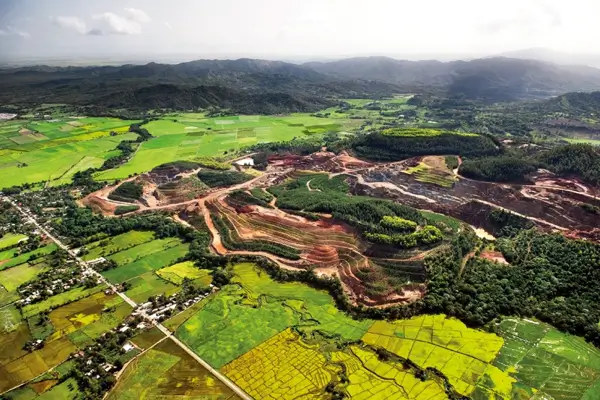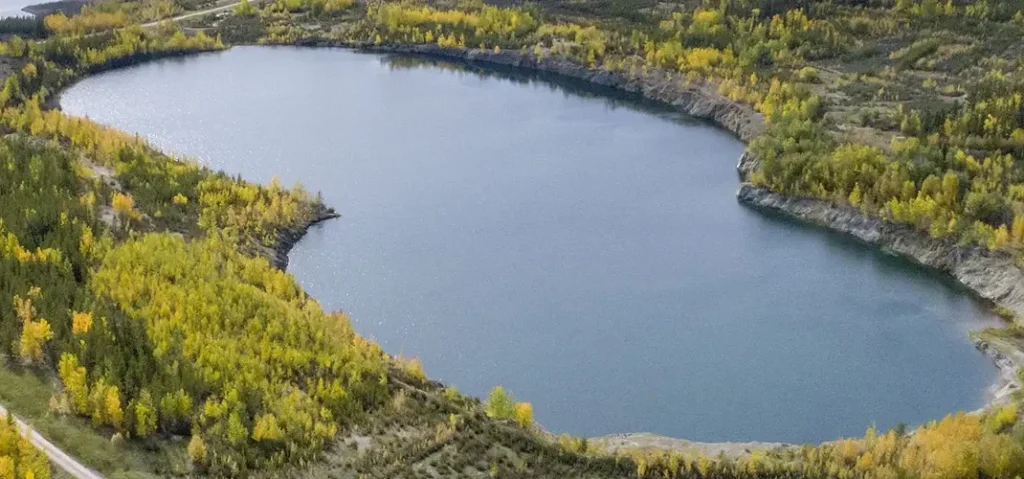Yes, that is possible. Partnerships with communities in Finland, Canada, or Australia could give us access to knowledge, exchange programs, and ideas for how to make mining and community life work well together.
Falcondo – A Model for Environmentally Sustainable Open-Pit Mining

Falcondo operates open pit mines in the Dominican Republic, specializing in iron and nickel extraction. By integrating land restoration alongside mining, the company demonstrates that surface mining can be carried out both efficiently and responsibly. Its practices serve as a valuable model for deposits such as the Viken alum shales, which may also be developed through surface mining methods.
Falcondo complements extraction with a rigorous rehabilitation and reforestation program. Rehabilitation is done in two key stages; It begins with the land reshaping stage, where contours are restored and erosion is prevented through drainage systems and terraces. This is followed by the reforestation stage, starting with fast growing grasses to stabilize the soil, and continuing with tree planting to rebuild forest ecosystems. In the past five years, more than four million trees have been planted in mined areas and surrounding provinces through partnerships with Rotary and Lions clubs, students, and community groups. Thanks to this program, over 75% of native flora regenerates within twelve years.
By linking restoration directly to mining activities, Falcondo ensures that environmental recovery begins while resources are still being extracted, rather than after operations end. This integrated approach not only minimizes ecological impact during mining but also accelerates the regeneration of natural habitats once extraction is complete.
Source: Falcondo, “About Falcondo”, https://www.falcondo.do/us.php
Cluff Lake – A Model for Sustainable Mine Closure and Land Reclamation
Orano Canada Inc operated The Cluff Lake Project in Saskatchewan, Canada from1979 to 2002, producing more than 62 million pounds (28 million kg) of uranium concentrate through a combination of underground and open-pit mines and a mill. What sets Cluff Lake apart is not only its contribution to the global supply of clean energy, but also the way its full life cycle demonstrates that mining can be carried out responsibly from start to closure.
After closure in 2002, Orano Canada implemented a comprehensive reclamation and restoration program to ensure the land could return to safe and productive use. This included dismantling facilities, securing tailings, reshaping the landscape, and restoring natural drainage systems. Since 2013, the site has been fully open to the public, with monitoring confirming that the land and water are safe for traditional and community uses.

The project has now entered its final stage, with the Canadian Nuclear Safety Commission approving the transfer of the property to Saskatchewan’s Institutional Control Program. This demonstrates that large-scale uranium mining can end with a landscape that is stable, restored, and reintegrated into its natural environment.
Although the Cluff Lake Project relied on extensive tailings ponds, while dry stacking is planned for the Viken alum shales. Cluff Lake remains a strong example of how responsible mining and sustainable reclamation are achievable, offering valuable lessons for future projects on minimizing environmental impact while supporting clean energy and local communities.